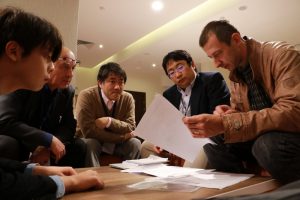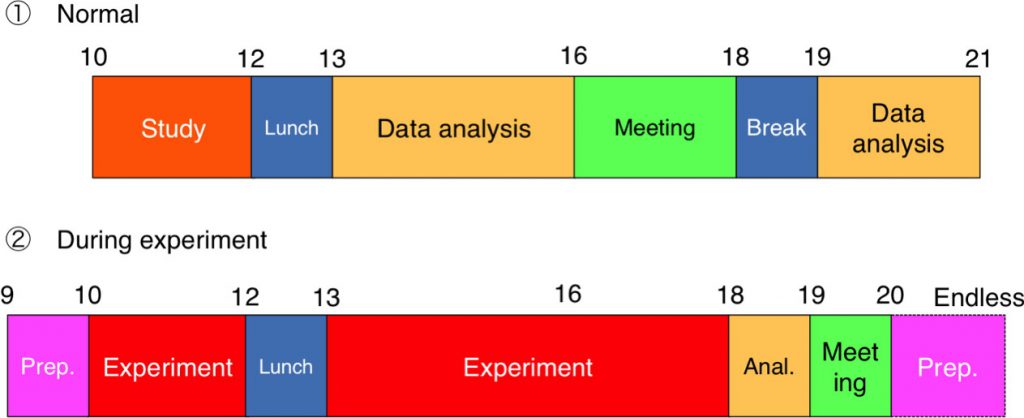Education & Research Environment
1. Office
The office is in the E-building of Institute of Laser Engineering. Windows PC or Mac and fixtures are lent for study and research.
2. Group meeting
We held fortnightly a group meeting to share and discuss about research progresses and information obtained by individual students. Staffs advise students according to their annual plan. Besides the group meeting, research progress report meeting, general meeting and a specific project meeting are held in the institute.
3. Group study session
Group study session is held in every week to read text books, review papers, important papers. Instructor is determined by rotation. Basically, books and papers written in English are read in the session.
4. Colloquium
A scientist, who visits our institute, gives a seminar on recent topics of his or her research field in a colloquium. Colloquium is held on an irregular based, and language is normally English.
5. Conference presentation
Master and Doctor courses students are asked to give a talk in an academic conference, at least, once a year. Preparation of a conference presentation is a good occasion to think deeply achievements and revise objectives and directions of your research activities. Doctor course students are asked to give a talk in an international academic conference, at least, once a course.
6. Research collaboration
Institute of Laser Engineering of Osaka University, as a joint research and collaborative research center on laser energy science, conducts a lot of joint research with many organizations both in Japan and abroad.
Regarding ultrahigh-field science, we are conducting joint research with the National Institute for Quantum and Radiological Science and Technology (QST), Kyushu University, Hiroshima University and others. Regarding the fast ignition laser fusion, we are conducting bilateral collaborative research with the National Institute for Fusion Science (NIFS), Hiroshima University, Tohoku University, Nagaoka University of Technology and others.
Collaboration with foreign countries includes the Lawrence Livermore National Laboratory, the University of Rochester, the University of Nevada, Reno, the University of California, San Diego, the University of Texas at Austin in the United States; the Rutherford Institutes in the UK; the Ecole Polytechnique and the University of Bordeaux in France; Spain’s Universidad Politecnica de Madrid; Germany’s Technische Universitat Dresden; Russia’s National Research Nuclear University; Moscow Engineering and Physics Institutes in Russia; Chinese Academy of Sciences, China National Astronomical Observatory; Korean Atomic Energy Research Institute and others. Students also participate in overseas joint experiments.







